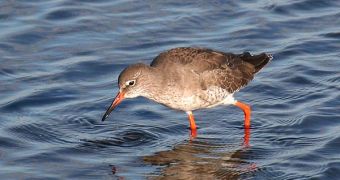It may very well be true that air, water and soil pollution are the poster children of the negative effects human society has on the environment, yet a team of scientists working with the University of Exeter recently decided to focus on light pollution and investigate its impact on local wildlife.
Although previous studies concerning this issue have stated loud and clear that light pollution toys with the ways in which plants and animals relate to their surroundings, this new research argues that, at least as far as migratory birds are concerned, light pollution is actually beneficial.
Eurek! Alert explains that lead researcher Dr. Ross Dwyer and his colleagues used satellite images provided by the US Air Force to estimate the levels of light pollution presently affecting the Forth Estuary in Scotland.
Apparently, this was the first time when military data was used to investigate how wildlife responded to light pollution.
Their decision to monitor said area of the British Isles was based on two considerations.
Firstly, the Forth estuary is heavily industrialized. As well as this, millions of migratory birds from the Arctic arrive here on a yearly basis.
After analyzing the feeding behavior of 20 common redshanks (i.e. a species of migratory birds) that came to these areas in order to spend the winter, the scientists found that the local levels of light pollution made it easier for these birds to find their next meal.
“Artificial light from industrial areas strongly influenced the foraging strategy of our tagged birds,” specialist Dr. Ross Dwyer explained.
Furthermore, “It was as if the 24-hour light emitted from lamps and flares on the Grangemouth oil refinery site created, in effect, a perpetual full moon across the local inter-tidal area which the birds seemed to capitalize on by foraging for longer periods at night and switching to a potentially more effective foraging behavior to locate prey.”
In other words, the birds used the light provided by the human-built facilities in their proximity to find food easier and faster.
The study was published in the Journal of Animal Ecology this Wednesday, November 28.

 14 DAY TRIAL //
14 DAY TRIAL //